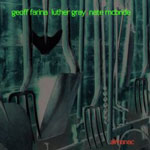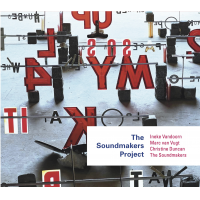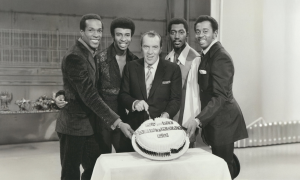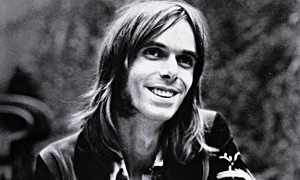Home » Jazz Articles » Film Review » Ernest Dawkins' New Horizons Ensemble: Live At The Origi...
Ernest Dawkins' New Horizons Ensemble: Live At The Original Velvet Lounge
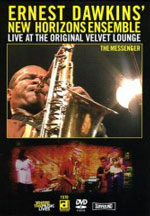 Ernest Dawkins' New Horizons Ensemble
Ernest Dawkins' New Horizons Ensemble Live At The Original Velvet Lounge: The Messenger
Delmark
2006
Live At The Original Velvet Lounge: The Messenger is the second DVD in a series documenting live performances at saxophonist Fred Anderson's renowned Chicago club. Filmed the day after Timeless, Anderson's own trio concert recording, The Messenger features AACM saxophonist Ernest Dawkins' flagship band, the New Horizons Ensemble, providing a full house with a liberal dose of, as Dawkins himself likes to call it, ed-ju-tainment.
A longstanding member of the AACM, Dawkins takes the organization's creed—Ancient to the Future—to heart. Merging styles and genres, Dawkins' ageless ensemble mends the divide between hi-brow and low-brow. When the cerebral intensity of free improvisation meets the driving physicality of primordial rhythm, sparks fly.
Featuring a mix of veterans and newer faces, the New Horizons Ensemble blends genres and generations. Dawkins, principle writer and arranger, alternates between tenor and alto, alongside long-term trombonist Steve Berry. Completing the front-line is young trumpeter Maurice Brown, fresh from a sabbatical in New Orleans. The youthfully impetuous rhythm section of bassist Darius Savage and drummer Isaiah Spencer rounds out the ensemble.
The quintet's interactive group dynamic is tight and solid, well honed since 2004's invigorating Mean Ameen (Delmark). With a punchy, three horn front line, the group blends propulsive hard bop swagger with polyrhythmic groove and free-form exploration into a rousing mix. Dawkins balances the mainstream hard-bop drive of Art Blakey's Jazz Messengers with the angularity and dissonance of classic free jazz, yielding an engrossing hybrid.
Modulating rhythms and tempos, Savage and Spencer lock tight during numerous thorny transitions, often increasing the fervency of their interplay to push the front line soloists into unexpected areas. Maurice Brown often takes the brunt of the rhythm sections impish prodding. "Toucouleur" finds him navigating the rhythm section's sudden vacillating cadences. Holding his own, he sprints through furious free bop mazes and circuitous polyrhythmic trails. Alternating between stoic scalar variations and cacophonous outbursts, Brown plays resolutely, with confidence and vigor.
Dawkins is regal and majestic on tenor, plying abstruse lyrical fragments throughout "Toucouleur." The acerbic and fervent demeanor of his alto sax reveals his most assertive playing. Spiraling out torrents of raspy figures on "Mean Ameen" and "The Messenger," Dawkins' husky tone and strident declarations invoke the lineage of fellow native Chicagoan's Anthony Braxton and Roscoe Mitchell.
Berry is more reserved, but nonetheless creative and lyrical, masterful with a plunger mute, especially on "Goin' Downtown Blues." Dawkins even attempts some blues singing and scatting on the aforementioned track, with a folksy dedication to Southside Chicago. The ensemble embraces their dynamic AACM heritage on the expansive "The Brood," with an all encompassing solo from Brown, who literally plays his trumpet backwards. The riotous closer, "Lookin' For Ninny" features the horn section marching out into the audience for a bracing second-line strut.
The concert film is shot from various perspectives on multiple cameras, with cross- fades and overlays used occasionally to transition between shots. The documentary style filming is generally unadorned and unobtrusive. The sound quality is superlative and the editing seamless, never missing a beat.
Now in their third decade of existence, Ernest Dawkins' New Horizons Ensemble sets a standard for newer groups to aspire to. An excellent set, expertly captured, The Messenger demonstrates how creative jazz tradition borrows from the past to inform the future.
Tracks: Intro; Mean Ameen; The Messenger; Goin' Downtown Blues; Toucouleur; The Brood; The Boute; Lookin' For Ninny; Go Fred.
Personnel: Ernest Dawkins: alto and tenor saxophone; Maurice Brown: trumpet, pocket trumpet; Steve Berry: trombone; Darius Savage: bass; Isaiah Spencer: drums.
Production Notes: 76 minutes. Recorded at 24 bit/96khz High Resolution Audio live on July 14, 2005 at Fred Anderson's Original Velvet Lounge, Chicago, Illinois. Extras: none.
Tags
PREVIOUS / NEXT
Support All About Jazz
 All About Jazz has been a pillar of jazz since 1995, championing it as an art form and, more importantly, supporting the musicians who make it. Our enduring commitment has made "AAJ" one of the most culturally important websites of its kind, read by hundreds of thousands of fans, musicians and industry figures every month.
All About Jazz has been a pillar of jazz since 1995, championing it as an art form and, more importantly, supporting the musicians who make it. Our enduring commitment has made "AAJ" one of the most culturally important websites of its kind, read by hundreds of thousands of fans, musicians and industry figures every month.



